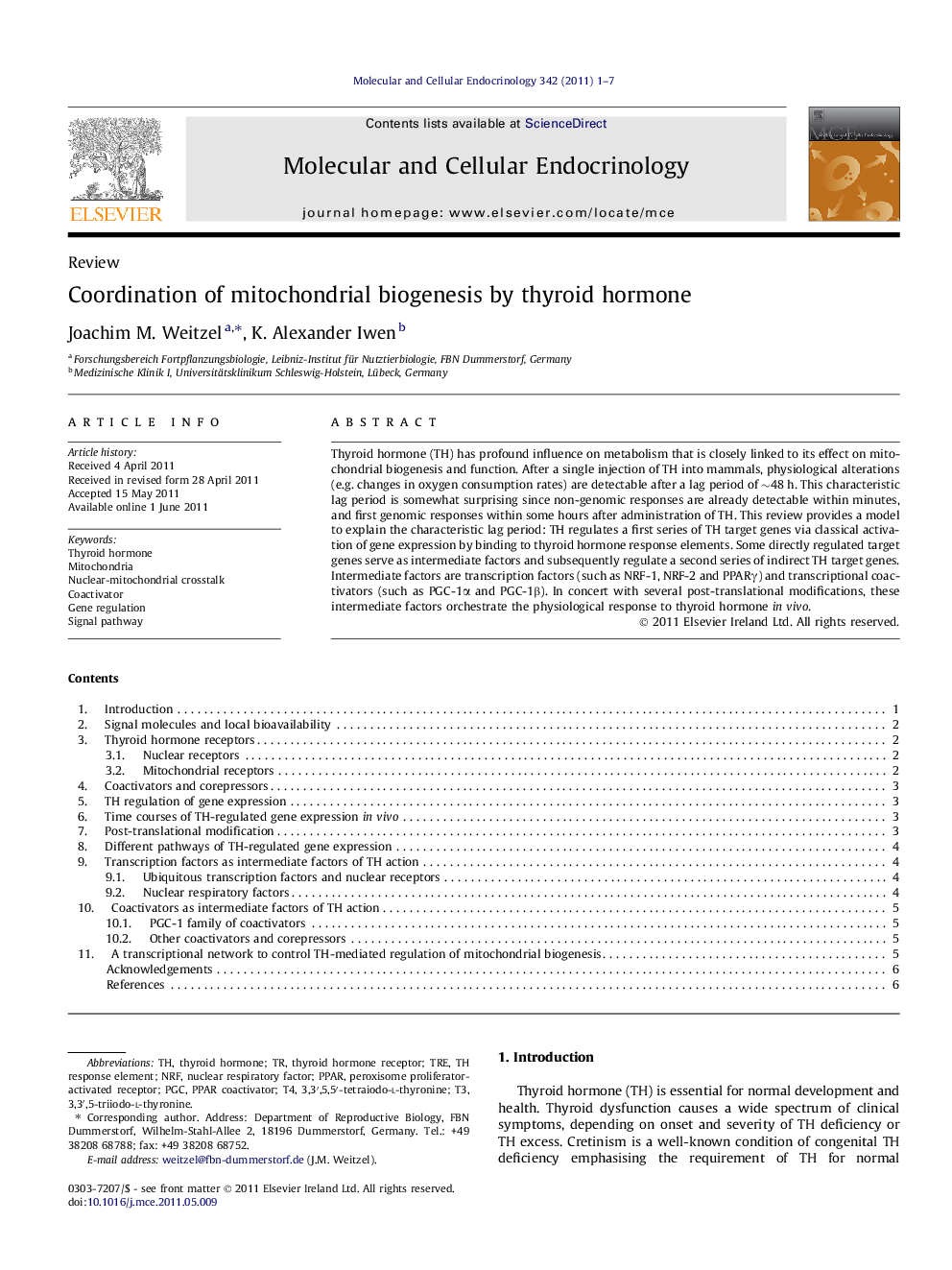| Article ID | Journal | Published Year | Pages | File Type |
|---|---|---|---|---|
| 2196565 | Molecular and Cellular Endocrinology | 2011 | 7 Pages |
Thyroid hormone (TH) has profound influence on metabolism that is closely linked to its effect on mitochondrial biogenesis and function. After a single injection of TH into mammals, physiological alterations (e.g. changes in oxygen consumption rates) are detectable after a lag period of ∼48 h. This characteristic lag period is somewhat surprising since non-genomic responses are already detectable within minutes, and first genomic responses within some hours after administration of TH. This review provides a model to explain the characteristic lag period: TH regulates a first series of TH target genes via classical activation of gene expression by binding to thyroid hormone response elements. Some directly regulated target genes serve as intermediate factors and subsequently regulate a second series of indirect TH target genes. Intermediate factors are transcription factors (such as NRF-1, NRF-2 and PPARγ) and transcriptional coactivators (such as PGC-1α and PGC-1β). In concert with several post-translational modifications, these intermediate factors orchestrate the physiological response to thyroid hormone in vivo.
► We developed a model for different time courses in thyroid hormone-mediated gene transcription. ► Early induced thyroid hormone target genes are direct targets via thyroid hormone receptors. ► Late induced thyroid hormone target genes are regulated via intermediate factors. ► Intermediate factors of thyroid hormone action are defined.
